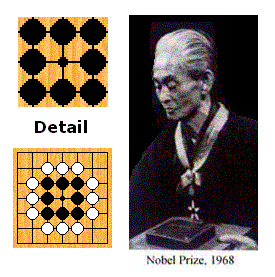|
"Well… the flow of the play was just right, and it began to bring me to the meadow. It always begins with some kind of flowing motion… a stream or river, maybe the wind making waves in a field of ripe rice, the glitter of leaves moving in a breeze, clouds flowing by. And for me, if the structure of the Go stones is flowing classically, that too can bring me to the meadow."
"The meadow?"
"Yes. That's the place I expand into. It's how I recognize that I am resting."
"Is it a real meadow?"
"Yes, of course."
"A meadow you visited at one time? A place in your memory?"
"It's not in my memory. I've never been there when I was diminished."
"Diminished?"
"You know… when I'm in my body and not resting."
"You consider normal life to be a diminished state, then?"
"I consider time spent at rest to be normal. Time like this… temporary, and… yes, diminished."
"Tell me about the meadow, Nikko."
"It is triangular. And it slopes uphill, away from me. The grass is tall. There are no animals. Nothing has ever walked on the grass or eaten it. There are flowers, a breeze… warm. Pale sky. I'm always glad to be the grass again."
"You are the grass?"
"We are one another. Like the breeze, and the yellow sunlight. We're all… mixed in together."
"I see. I see. Your description of the mystic experience resembles others I have read. And this meadow is what the writers call your 'gateway' or 'path.' Do you ever think of it in those terms?"
"No."
"So. What happens then?"
"Nothing. I am at rest. I am everywhere at once. And everything is unimportant and delightful. And then… I begin to diminish. I separate from the sunlight and the meadow, and I contract again back into my bodyself. And the rest is over." Nicholai smiled uncertainly. "I suppose I am not describing it very well, Teacher. It's not… the kind of thing one describes."
"No, you describe it very well, Nikko. You have evoked a memory in me that I had almost lost. Once or twice when I was a child… in summer, I think… I experienced brief transports such as you describe. I read once that most people have occasional mystic experiences when they are children, but soon outgrow them. And forget them…."
|

























